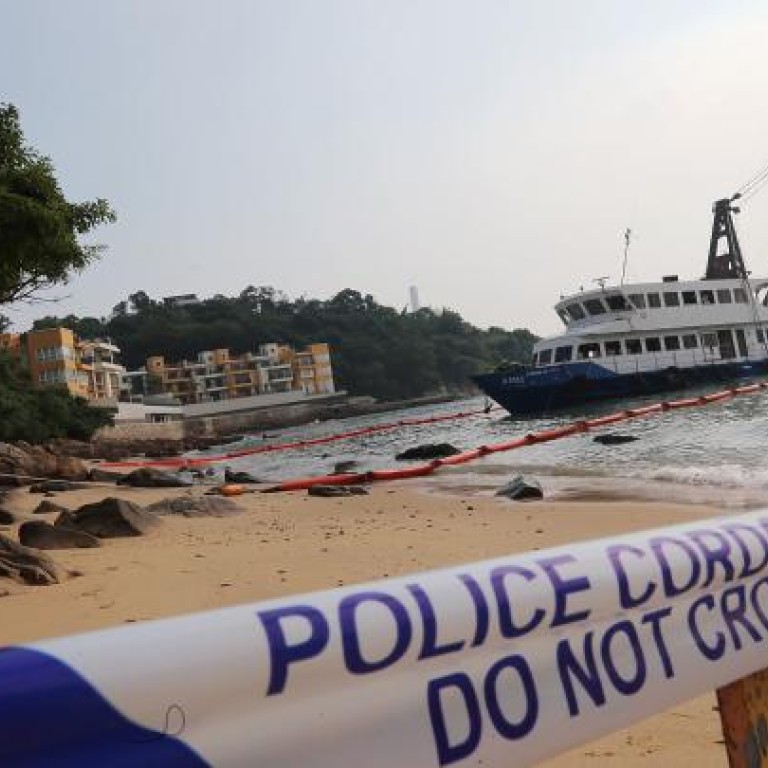
Captains may have averted an even bigger disaster
Vessels both swerved late to their right, avoiding a head-on collision; police investigate whether there was a failure to give way
The captains of the two ferries may have averted a head-on crash, and an even bigger disaster, by both swerving right, said a marine engineering expert who studied photos of the wreckage.
Louis Szeto Ka-sing, a specialist in vessel design and maintenance at the Hong Kong Institute of Engineers, said this would explain the damage to the left sides of the two ferries.
"The captains were sitting on the right side of the vessels. It would be natural for them to turn right to protect themselves after finding they were getting too close and could collide," Szeto said. "By the time they hit, the smaller vessel would have completed its turn. So the head of the ferry could have crashed into the launch's end."
We will investigate why they did not see each other and whether crew members of the two vessels involved were negligent in the incident
Pictures of the wrecked vessel, the Lamma IV, which was moved to shallow waters off Lamma Island on Tuesday night, show a hole of three metres square under the water line, Szeto said.
The pictures confirmed his earlier view that two of the six watertight compartments below deck could have been damaged and filled with water, leading to the quick sinking of the launch.
Police said they were investigating whether a failure by the captains to give way was to blame for the collision of the public ferry, the Sea Smooth, and the Lamma IV, which led to 38 deaths and more than 100 injured.
Detectives from the marine police regional crime unit will talk to survivors to collect evidence.
"We will investigate why they did not see each other and whether crew members of the two vessels involved were negligent in the incident," a government source said.
Shipping experts yesterday confirmed that the Sea Smooth had an onboard automatic identification system that tracked its position before and after the collision, as was mandatory for all high-speed vessels by the International Maritime Organisation, a branch of the United Nations.
"The AIS equipment on Sea Smooth should show investigators the ferry's path in the minutes leading up to the collision. But without similar tracking plots from the Lamma IV the information from Sea Smooth will tell investigators only half the story," said one shipping insider.
Chief Executive Leung Chun-ying pledged on Tuesday to exercise the power of the Chief Executive in Council by setting up a commission of inquiry.
The commission is expected to be more powerful than the usual investigative committees. It can issue arrest warrants to compel the attendance of any person not complying with a summons and enter any premises for inspection. It is a criminal offence for anyone to refuse to attend such a hearing.
Several commissions of inquiry have been set up since the handover. In December 1996, now-retired Justice Woo Kwok-hing was appointed to head a commission to investigate the blaze in the Garley Building in Nathan Road that left 40 dead.
About two years later, Woo again headed a commission to investigate the chaos after the opening of Chek Lap Kok airport. Then chief secretary Anson Chan Fang On-sang was forced to apologise for the saga, although the Woo commission did not place specific blame on Chan, who was involved in the opening.
In 2007 Court of Appeal judge Justice Wally Yeung Chun-kuen headed the inquiry into allegations of government intervention in academic freedom at the Hong Kong Institute of Education.

